Pilates Exercises to Strengthen Your Pelvic Floor Muscles
Pilates for pelvic floor health
We’re proud to share that this blog post has been published in the April 2022 issue of The Brick Magazine!
One of the most important things to understand about pelvic health is that your pelvis is part of a larger integrated system. Each of us has a unique physical structure. And once we take the time to understand the structure of our bodies and how individual parts work together, developing our overall health and well-being becomes considerably easier.
Equally important is the simple fact that anyone can improve their pelvic floor health through smart, effective movement and exercise. Simple Pilates exercises can help strengthen your pelvic floor and bring more awareness to your body.
Sign up for an introductory session for an assessment of your individual needs and customized instruction.
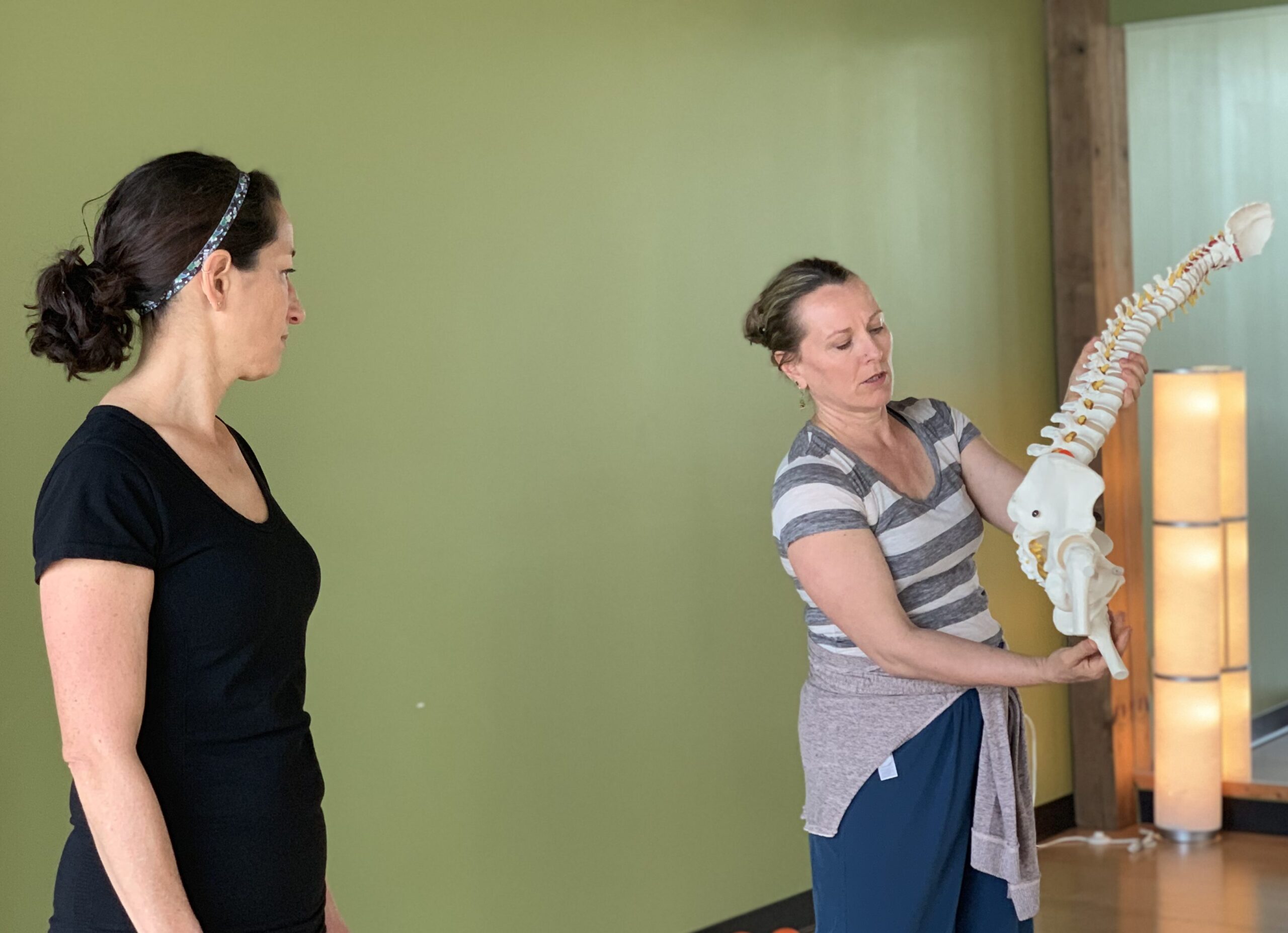
What is the pelvic floor?
Your pelvic floor is a network of muscles that spread across the bottom of your pelvic cavity like a hammock. They have many functions including supporting the pelvic organs such as the uterus, bladder, and rectum. They also help to withstand increases in pressure that occur in the abdomen with activities such as coughing and sneezing, and they help to enhance the sexual response. These are the muscles you are targeting when doing Kegels.
Many women have probably heard of Kegels, but did you know that studies have shown that most women are unable to perform a proper Kegel contraction without some education? It takes diligence, awareness, and practice to perform an effective pelvic floor contraction or a Kegel. This is where body awareness and Pilates can be helpful.
Benefits of Pilates for the pelvic floor
- Releases stress
- Relieves low back pain
- Builds core strength
- Helps improve pelvic floor disorders, including urinary incontinence
“How can I tighten my pelvic floor muscles fast?” It’s not just about Kegel exercises
When it comes to your pelvic health, “slow and steady” truly does win the race. Unfortunately, so many of us are taught to approach exercise fast and furiously. So, if you’re one of those people who always assumed that any good exercise requires squeezing the bejesus out of whatever muscle you’re trying to work, congratulations, you don’t have to do that anymore.
True pelvic health means moving beyond the notion of simply doing targeted exercises like Kegels and muscling through things, and instead working more organically, starting with our basic alignment and breath.
Performing isometric exercises like Kegels without a basic understanding of your own structure and the shape and needs of your pelvic floor can actually have a negative impact. Which is why working through pelvic pain or discomfort is never a good idea. The goal is always to reconnect your body’s natural movement system to restore healthy patterns.
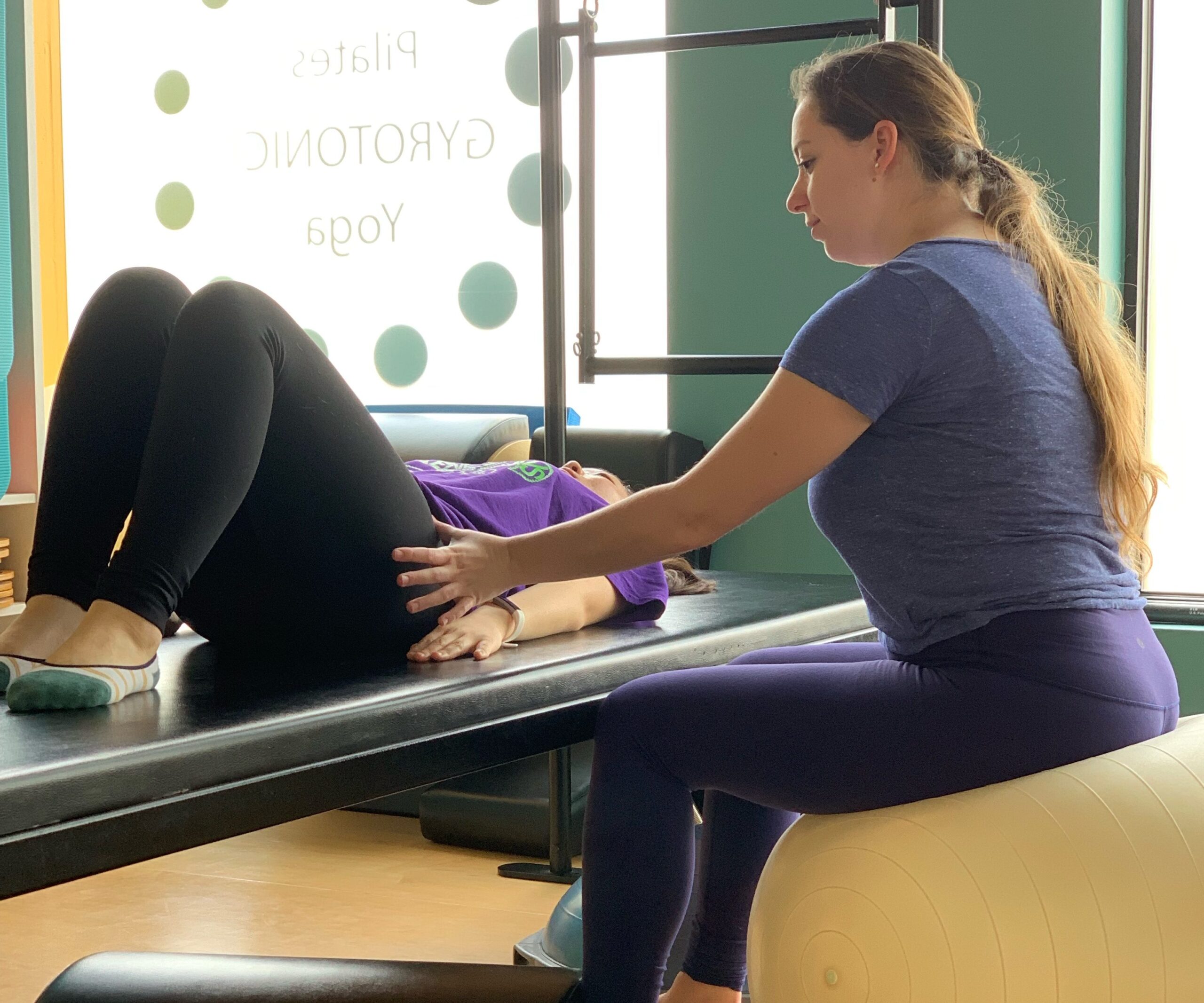
Gentle Pilates, GYROTONIC® exercise and pelvic floor awareness
Engaging in specific simple exercises on a daily basis will have the greatest impact on your body. Which is why working with someone who has professional expertise can be essential for starting things off right.
Movement professionals such as pelvic health physical therapists, Pilates instructors and GYROTONIC® method trainers can see things in your body and the way you move that you simply can’t or are not yet aware of. Having eyes on your body in that way can help you more quickly unravel any postural issues or imbalances you might have and help you find proper alignment to help you work effectively on your own.
Just becoming aware of your pelvic floor – what it is and how it feels – is a helpful first step for most of us. Because although we think we understand it in theory, many of us very rarely take the time to stop and get a true sense of how it feels. You can help build awareness of the pelvic floor with these four easy steps:
Step 1: Try this exercise for pelvic floor awareness
Sit upright on a chair with a lengthened spine. Take a few deep breaths, letting your ribs expand on the inhale and contract on the exhale.
Take notice of the bony parts on either side of your pelvis, which are commonly referred to as your “sits bones.” While continuing to sit upright, just gently rock from side to side, from one sits bone to the other. As you do this, try to imagine your Take notice of the bony parts on either side of your pelvis, which are commonly referred to as your “sits bones.” While continuing to sit upright, just gently rock from side to side, from one sits bone to the other. As you do this, try to imagine your tailbone in the back and your pubis symphisis in the front, which is the joint between your two pubic bones. You won’t really be able to feel the tailbone or pubis symphisis, but imagining them centrally situated in relation to your sits bones can give you an overall sense of your pelvic floor.
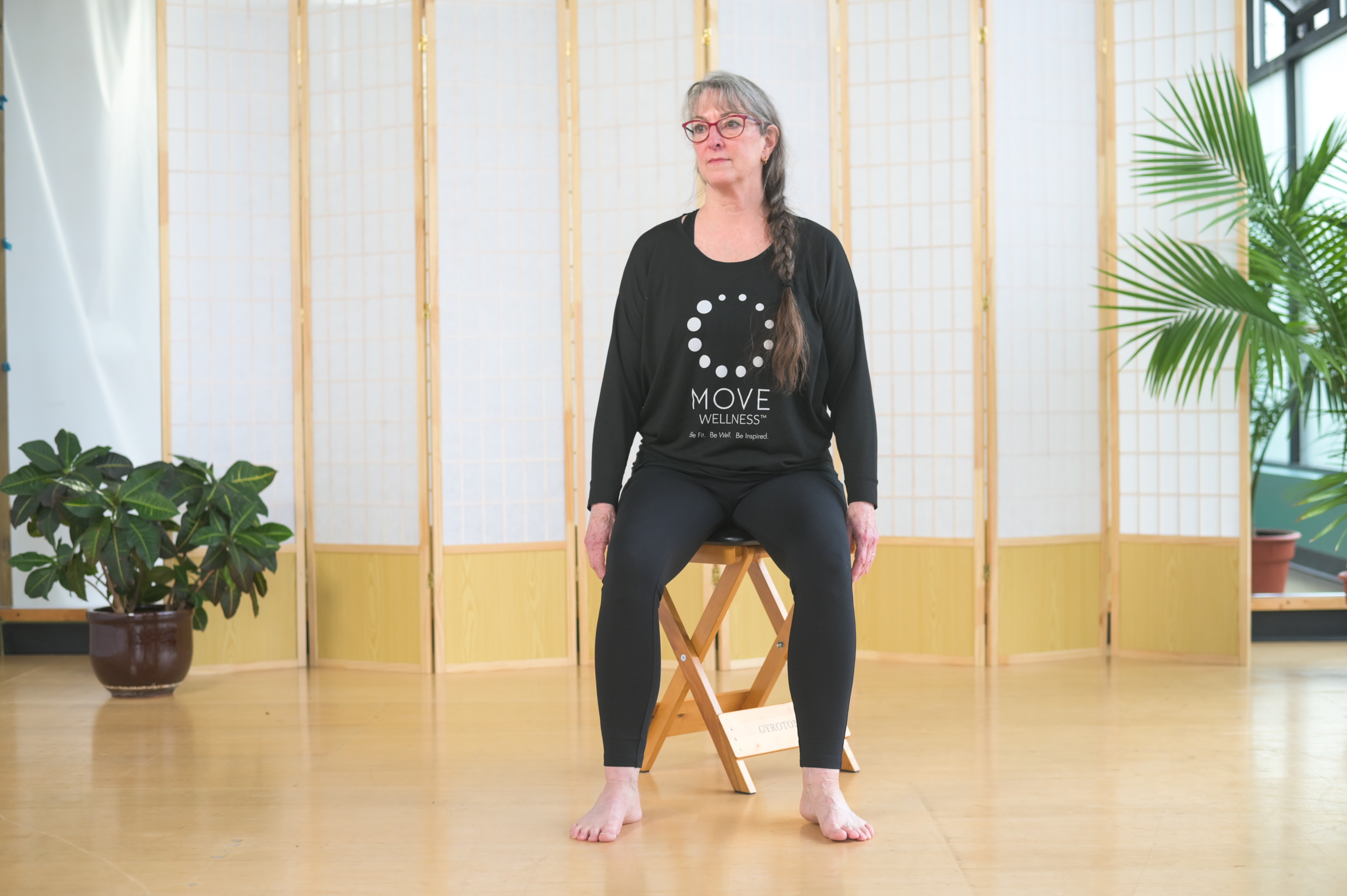
Step 2: Gentle engagement of the pelvic floor
Now with all those four points in mind, settle into the middle of your chair again and think about the tissue contained within those four points. That’s what you want to think about when we talk about engaging the pelvic floor. But that engagement should be a subtle sensation, not an intense squeeze.
The muscles and tissue here work differently; it’s not like flexing a bicep or squeezing a glute muscle. Performing gentle Kegels should feel like a lift and narrowing of the pelvic floor tissue rather than a squeeze.
Step 3: Learning to breathe optimally
Breathing. Meditation. Mindfulness. We talk and hear about these concepts a lot, and know they’re important. But it can be hard to really understand why and then put them into practice in ways we find useful.
Breath work is what I like to think of as a “clean slate” exercise. We have little to no sense of how we actually feel or what’s going on with our bodies if we don’t take a moment to breath first. For most of us, we often skip this step simply because we feel like we don’t have the time for it. But beginning with the breath gives us a starting point; a place where we can become aware of what’s happening with our body and can gauge any changes as we progress through movement.
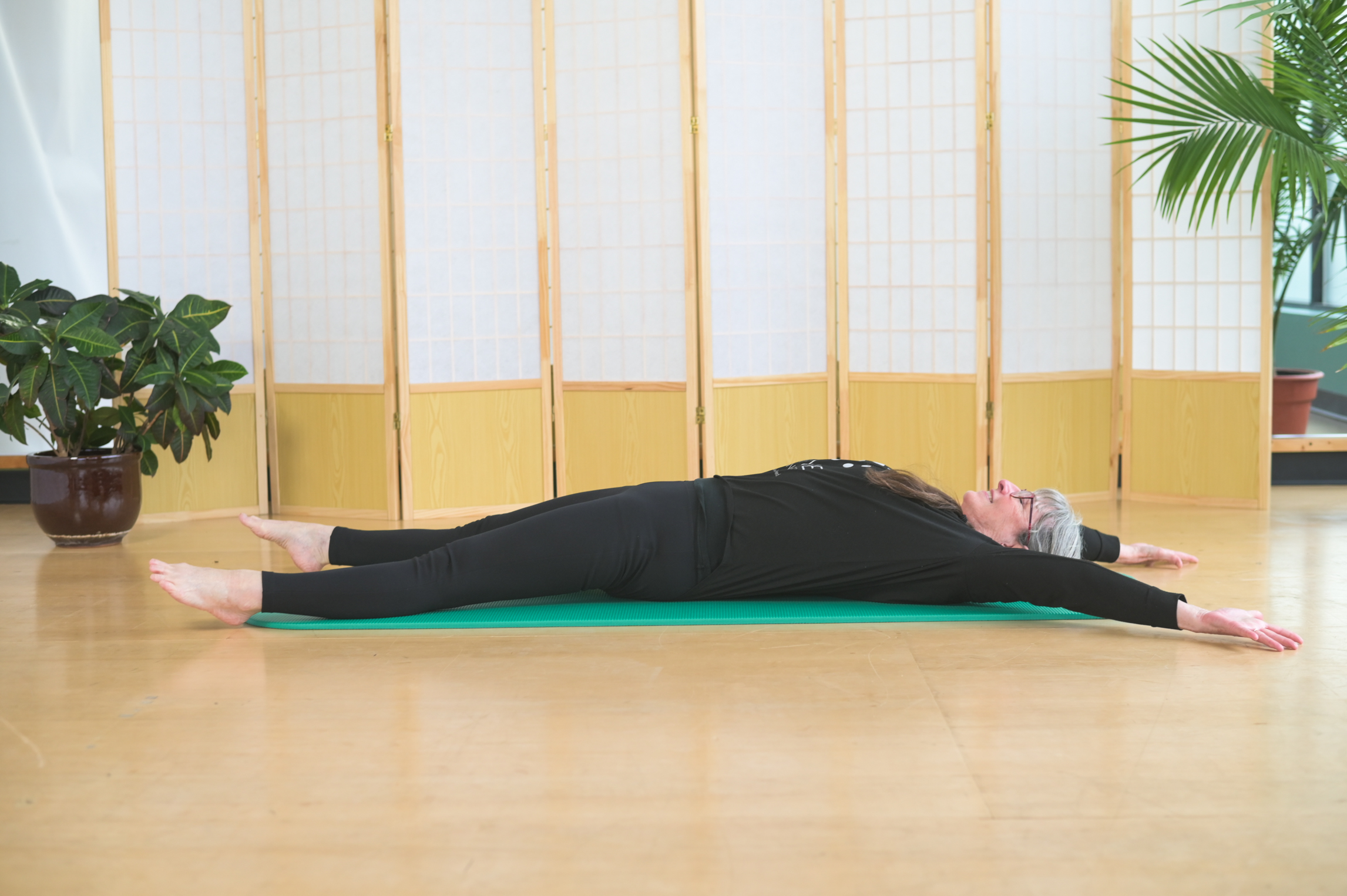
You can work on breathing while sitting upright or lying down. Start by simply letting your body relax and taking a few easy breaths. And as you breath, notice where you feel the breath expanding in your body. Chest? Ribs? Belly?
From there, picture your full ribcage. And as you breath, think about sending the breath into the back and sides of the ribcage.
Then, imagine your body as similar to a balloon. On the inhale, fill the balloon with air, and then picture the tissue and muscles of your pelvic floor gently lifting with the balloon on the exhale, all while keeping the rest of your body fairly still.
Your abdominals might contract slightly, but otherwise you should try not to move your pelvis, glutes or hip flexors. Keep your bones and bigger muscles still.
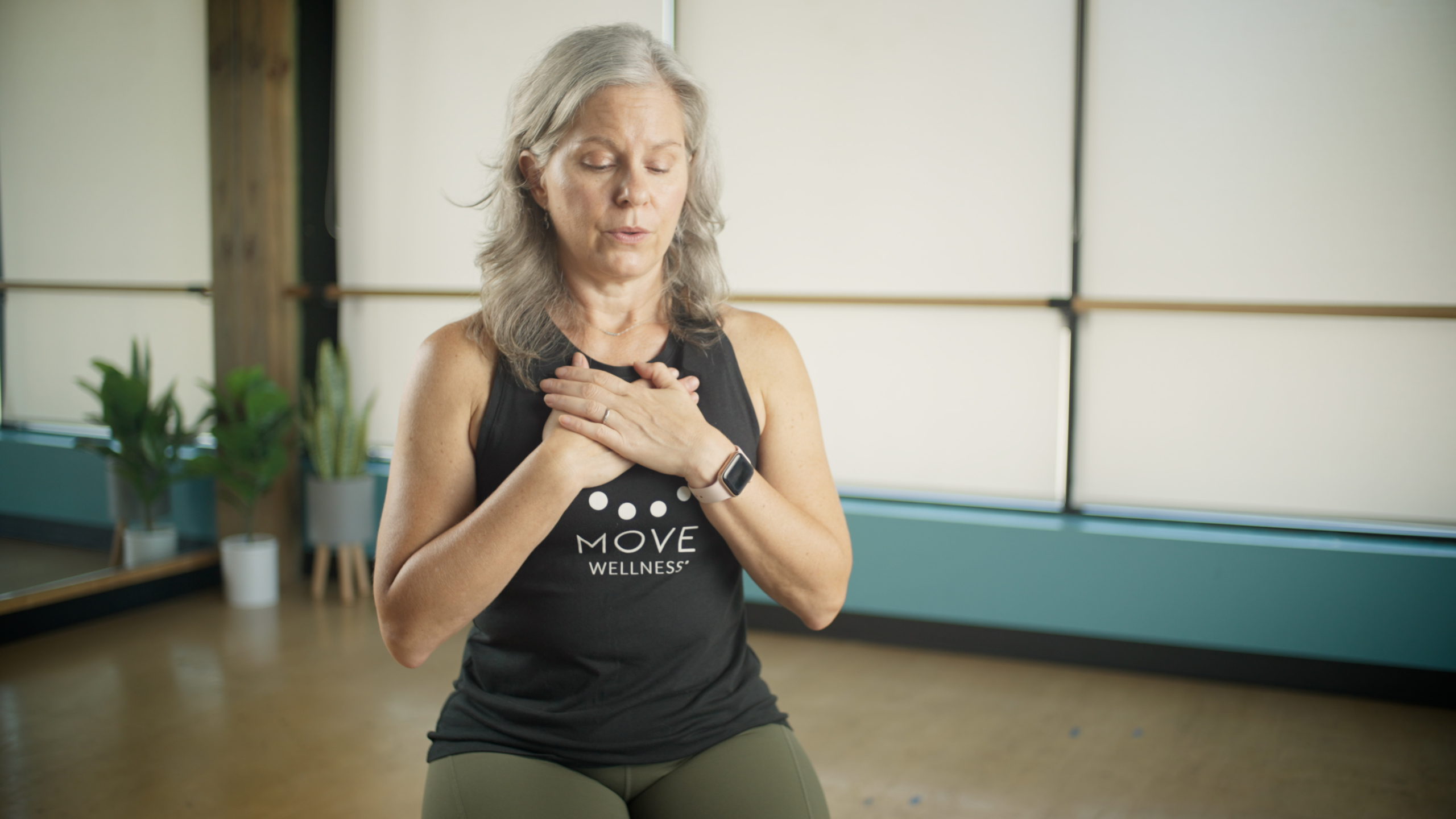
Step 4: Gentle breathing and lifting the pelvic floor
It will take some time and practice to do this without automatically trying to force or overwork your muscles. And that’s why starting small with that simple pelvic awareness is important. It helps you build the organic contractions and stimulation you’re aiming for and avoid any bearing down or pushing out. Ultimately, it should feel as though there’s a little sling or hammock lifting everything up and releasing down.
Safe, effective pelvic floor exercises
There are several simple, everyday Pilates exercises focusing on the spine, hips, abdominals and legs that are perfect for building and maintaining pelvic health. And you’ve most likely heard about or tried at least a few of them.
Stretches for the back and spine such as cat stretch, hip rolls, hip release and spinal rotation. Simple abdominal exercises like leg slides, single leg lifts and the side leg series. All of these stretches and exercises can be learned quickly and easily performed at home on a daily basis.
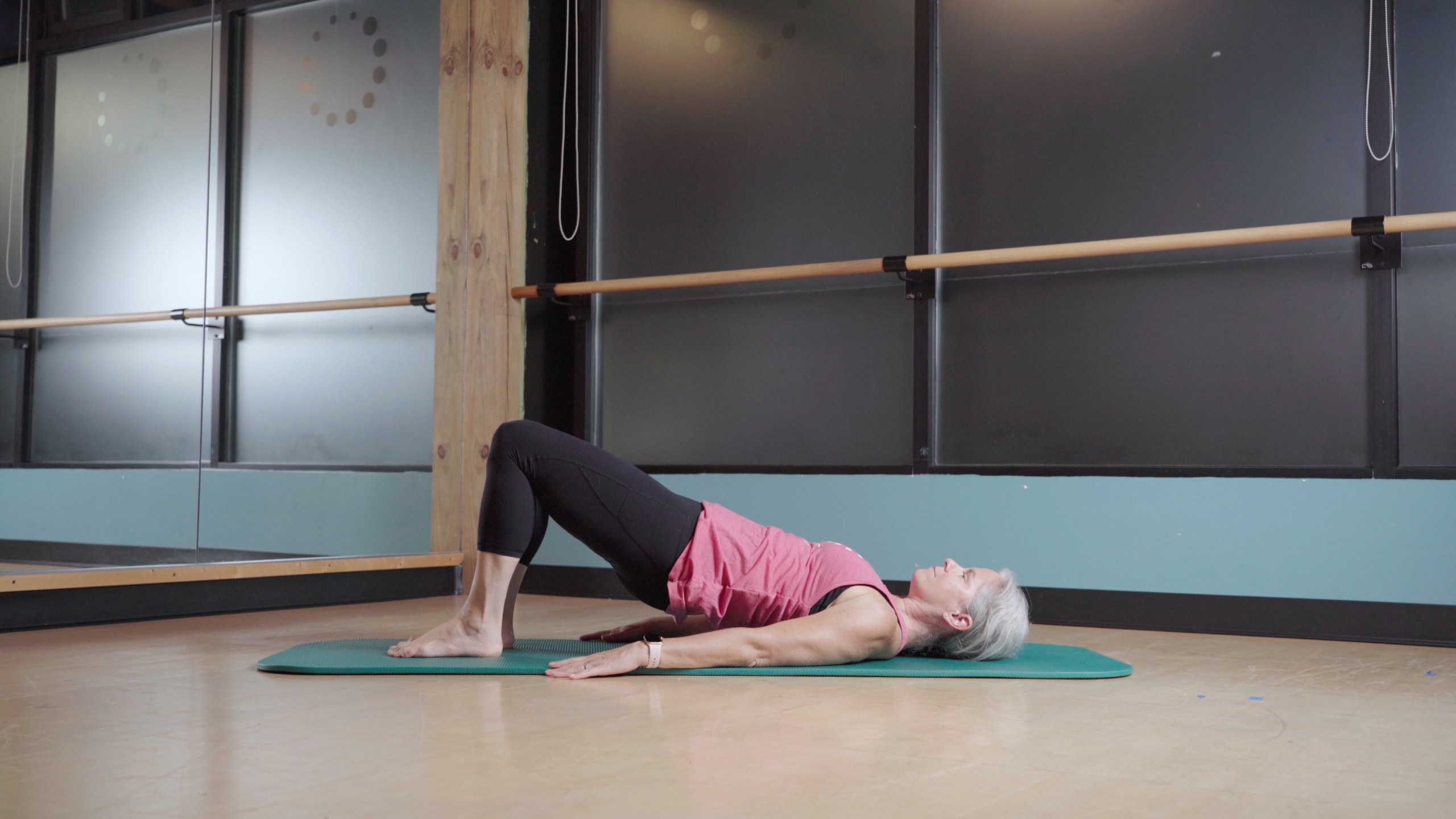
Learn pelvic health exercises with gentle Pilates training
The primary reason we encourage newcomers at MOVE to sign up for an introductory session is because it’s hands down the best way for us to assess your individual needs and help you develop a safe, effective routine going forward.
One size does not fit all when it comes to our bodies and our pelvic health (or anything else for that matter), which makes customized instruction essential. Having expert eyes properly assess your body’s movement patterns and then having a one-on-one conversation with someone about your individual lifestyle and health goals is something we all need and deserve.
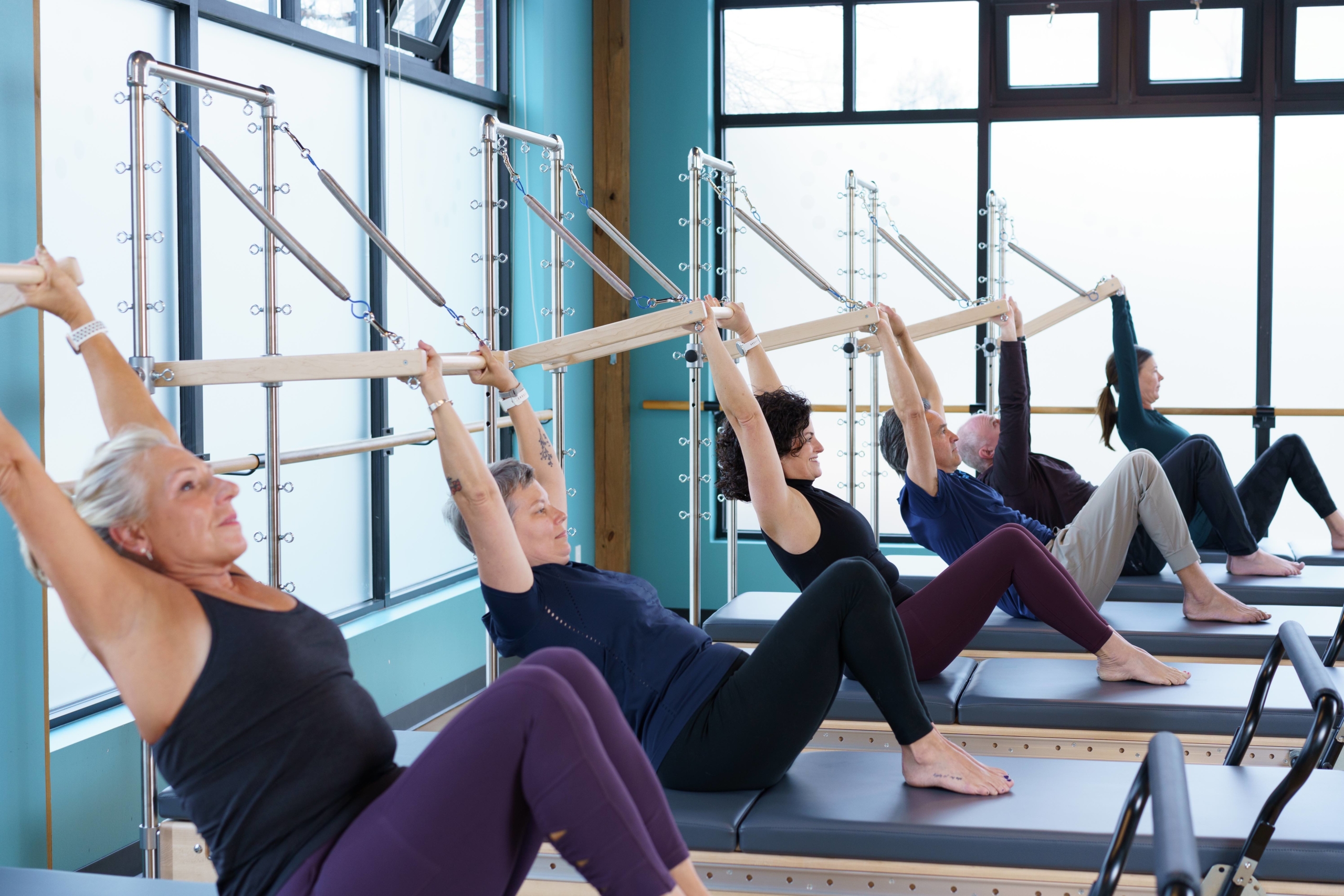
Private Pilates training vs. small group classes
For some people, starting with private training to get that extra individual support works best. And for others, signing up for gentle and beginner level Pilates classes and Gyrokinesis classes after an initial assessment is the perfect way to get hands-on training in a small, supportive group environment.
Ready to find that pelvic lift? Call our studio at 734-224-2560 or email us at office@movewellness.com to sign up for an introductory session today.
There will be no pelvic floor left behind!

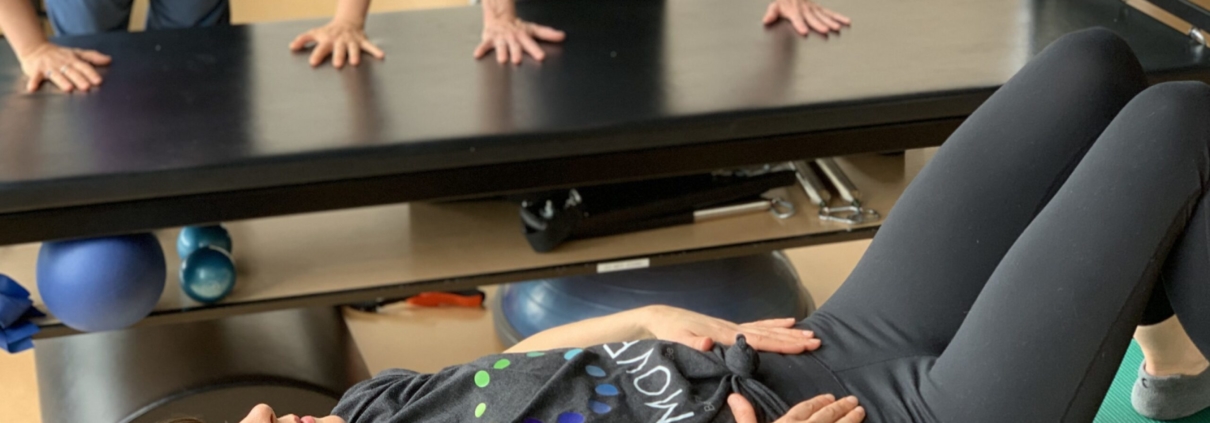

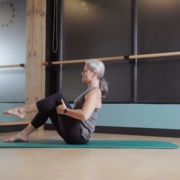
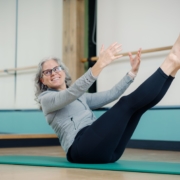

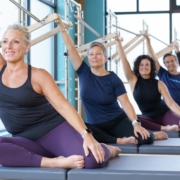
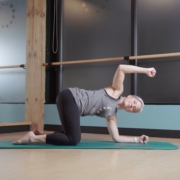


Leave a Reply
Want to join the discussion?Feel free to contribute!